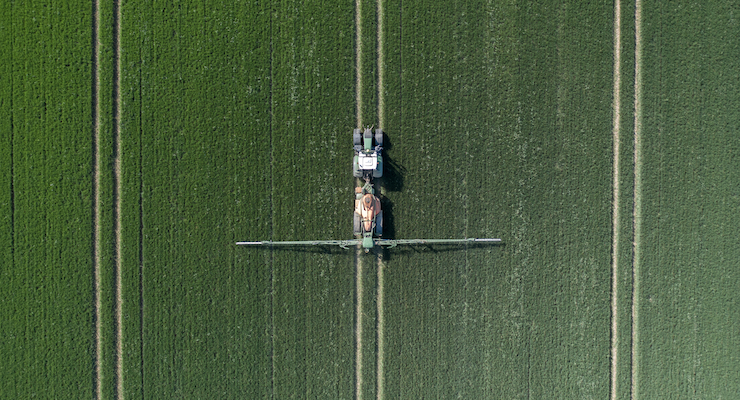11.24.20
Nutraceutical and cosmeceutical ingredients supplier Sabinsa recently announced that it has started testing for glyphosate, a compound patented by Monsanto and branded as the pesticide RoundUp in the 1970s which has been linked to a rare form of cancer called non-Hodgkins Lymphoma. It is most commonly used for non-GMO crops.
Using a proprietary method, Sabinsa tests for residual glyphosate, following an October decision to begin testing for residual herbicide in 20 nutraceutical ingredients as a routine practice, along with all other USP listed pesticides. They are widening the scope to all products the company sells. Spices must be below 7 ppm (parts per million) and herbs must be below 0.2 ppm, according to the company’s standards.
“The method development of these products is very challenging and time consuming, requiring skilled techniques,” Sabinsa founder and chairman Dr. Muhammed Majeed said. “Given Sabinsa’s mission to improve human health, confirming purity of the materials we sell makes sense.
Glyphosate is a common and controversial compound involved in many of the plants in the U.S. food supply. It is a widely-used herbicide that controls broadleaf weeds and grasses, and has been registered as a pesticide in the U.S. since 1974. It is also used to dry crops out before harvesting, speeding up maturation. It is often used with GMO crops, many of which were designed to withstand its toxicity.
While initial industry testing reported a low toxicity for glyphosate in mammals, which led regulatory authorities to set high acceptable exposure limits, new information has raised profound concerns with many organizations and consumers regarding its safety. In addition to the compound’s cancer-causing properties, it kills honeybees by leaving them vulnerable to pathogens and premature death. Multiple organizations including the WHO’s International Agency for Research of Cancer have stated that it is carcinogenic to humans, and there have been multi-million dollar lawsuits against the company for cancer found to be from exposure to that material. Monsanto is now owned by Bayer.
The residue definition for glyphosate in wheat in the U.S. and E.U. requires measuring the amount of glyphosate in the product. Food Chemical Codex Testing, on the other hand, requires measuring the amount of N-acetylglyphosate, which is a glyphosate metabolite. Australia requires glyphosate, N-acetylglyphosate, and another metabolite called AMPA. Sabinsa analyzes both glyphosate and the major metabolite AMPA, and reports the total concentrations of the two as glyphosate. Glyphosate rapidly gets converted into AMPA after it’s absorbed into the soil, which is why Sabinsa’s scientists consider it necessary to test for AMPA as well.
Using a proprietary method, Sabinsa tests for residual glyphosate, following an October decision to begin testing for residual herbicide in 20 nutraceutical ingredients as a routine practice, along with all other USP listed pesticides. They are widening the scope to all products the company sells. Spices must be below 7 ppm (parts per million) and herbs must be below 0.2 ppm, according to the company’s standards.
“The method development of these products is very challenging and time consuming, requiring skilled techniques,” Sabinsa founder and chairman Dr. Muhammed Majeed said. “Given Sabinsa’s mission to improve human health, confirming purity of the materials we sell makes sense.
Glyphosate is a common and controversial compound involved in many of the plants in the U.S. food supply. It is a widely-used herbicide that controls broadleaf weeds and grasses, and has been registered as a pesticide in the U.S. since 1974. It is also used to dry crops out before harvesting, speeding up maturation. It is often used with GMO crops, many of which were designed to withstand its toxicity.
While initial industry testing reported a low toxicity for glyphosate in mammals, which led regulatory authorities to set high acceptable exposure limits, new information has raised profound concerns with many organizations and consumers regarding its safety. In addition to the compound’s cancer-causing properties, it kills honeybees by leaving them vulnerable to pathogens and premature death. Multiple organizations including the WHO’s International Agency for Research of Cancer have stated that it is carcinogenic to humans, and there have been multi-million dollar lawsuits against the company for cancer found to be from exposure to that material. Monsanto is now owned by Bayer.
The residue definition for glyphosate in wheat in the U.S. and E.U. requires measuring the amount of glyphosate in the product. Food Chemical Codex Testing, on the other hand, requires measuring the amount of N-acetylglyphosate, which is a glyphosate metabolite. Australia requires glyphosate, N-acetylglyphosate, and another metabolite called AMPA. Sabinsa analyzes both glyphosate and the major metabolite AMPA, and reports the total concentrations of the two as glyphosate. Glyphosate rapidly gets converted into AMPA after it’s absorbed into the soil, which is why Sabinsa’s scientists consider it necessary to test for AMPA as well.




























